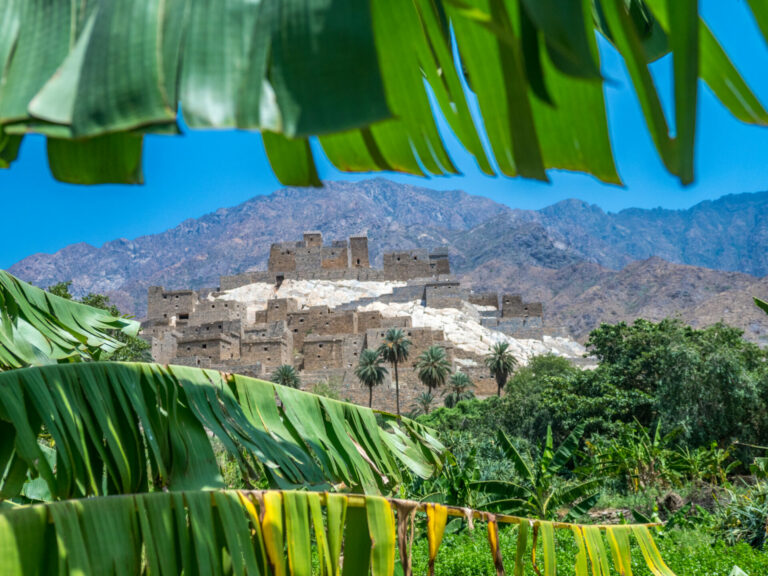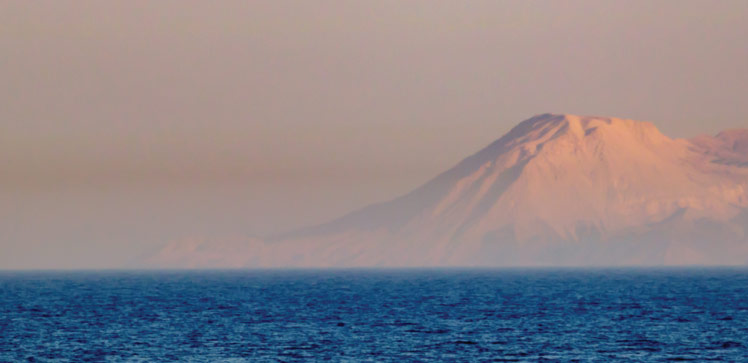Earth Science and Engineering
A dessert-like desert: Californian lithosphere resembles crème brûlée
A model for the southeastern California lithosphere suggests that a strong upper crust overlies weaker lower rock layers.

Decades after two large earthquakes rocked the Mojave Desert in California, the discovery of new post-earthquake displacement features has prompted KAUST researchers to update the existing model for this earthquake-prone region. Their findings support a thin “crème brûlée” model in which the strength lies in the upper crust, while the lower crust exhibits more ductility over time than previously thought.
To understand how the Earth’s lithosphere, comprising the crust and upper mantle, behaves in earthquake cycles (before, during and after earthquakes) over time, scientists must determine how strength is distributed in the rock layers of the lithosphere.
“By strength, we mean how much force rocks can withstand over time,” says Shaozhuo Liu, a postdoc who worked on the project with KAUST’s Sigurjón Jónsson, together with researchers from California. “We are interested in rheology—how the rocks behave and ‘flow’ when forces are applied to them.”
The occurrence of earthquakes, the evolution of fault zones, and the resulting topography are dictated by how lithospheric rocks respond to forces.
“Given that the majority of lithospheric rocks are located several kilometers below the surface, we cannot directly observe how they respond,” says Liu. “Building rheological models based on observations collected at the surface is the best alternative.”
After the two Mojave earthquakes, earthquake-induced displacements on the surface were studied extensively. Previous models favored a strong crust (both the upper and lower crust) and a low-viscosity upper mantle. However, the newly determined post-earthquake displacements lasted longer than expected, suggesting that physical processes in the lower crust were more active than previously thought.
“Building on our work on these displacement features in 2015,” says Liu, “our current study sought to clarify the dominant processes that would produce such features.”
Their findings suggest that, after around two years of continued slip both on and below the original ruptures, the following decades saw earthquake-induced viscoelastic relaxation as the dominant physical process in the lower crust and upper mantle. The team showed that the viscosity of the lower crust is about five times lower than previously thought and only marginally higher than that of the upper mantle; that is, the lower crust appears to be weaker than anticipated, supporting a thin-skinned “crème brûlée” model for the region.
“Revisiting well-studied sites has the potential to provide new insights into lithospheric rheology,” says Jónsson. “This knowledge will help with regional hazard assessments for earthquake-prone highly populated territories like California.”
References
-
Liu, S., Shen, Z-K., Bürgmann, R. & Jónsson, S. Thin crème brûlée rheological structure for the Eastern California Shear Zone. Geology 49 (2020).| article
You might also like

Applied Mathematics and Computational Sciences
Measuring the impact of desert greening

Applied Mathematics and Computational Sciences
Data-driven regional ocean models essential for planning

Earth Science and Engineering
Oil reservoirs under pressure

Earth Science and Engineering
Anthropogenic air pollution impacts health and climate in the Middle East

Earth Science and Engineering
Lagoon blooms out of Red Sea season

Earth Science and Engineering
The Arabian plate is holding steady

Earth Science and Engineering
Harnessing the sun's energy for rainfall

Earth Science and Engineering




